We can all agree that there’s nothing more exciting than watching your child grow and develop into the loving, caring, unique, and one-of-a-kind individual they’re destined to be – one milestone after another.
And parents are lucky enough to have front row seats to the show.
From their first words to their first steps, first tooth, first time eating solids, and even their first time on a potty – the first three years are considered to be the most rapid period of development in a person’s life.
RELATED: Tips and Tricks for When You’re Ready to Stop Breastfeeding
Of all the milestones your baby will hit in the first few years of their life, the transition from a bottle to a sippy cup is one of the first – and, believe it or not, one of the most important to their overall well-being.
With that said, it’s okay if you feel overwhelmed, stressed, or anxious during this transition period.
And it’s completely normal for your child to react negatively or throw a tantrum as a result.
Don’t worry – we’ll break down everything you need to know about why sippy cups are necessary, when they should be utilized, how to choose the right one, and how to teach your child to use one properly.
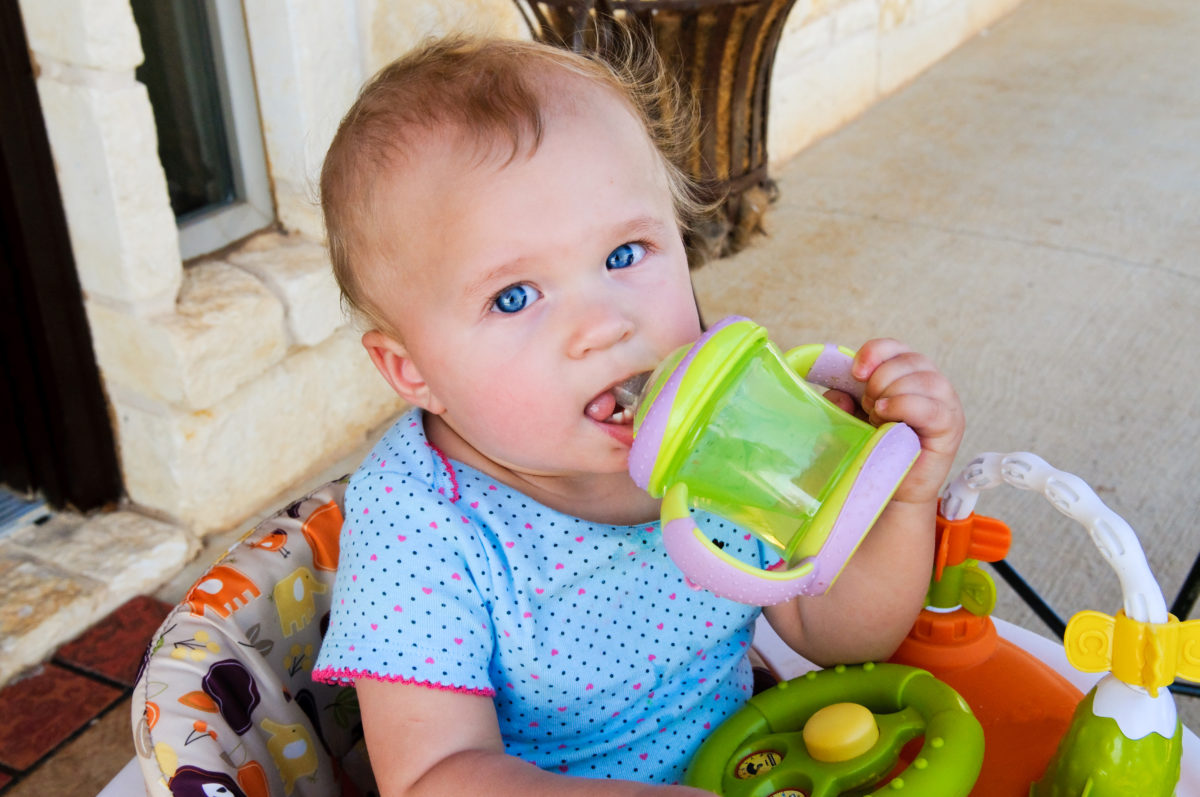
When to Introduce Your Child to a Sippy Cup
The World Health Organization (WHO) recommends that all babies be exclusively breastfed for the first six months of their life, but breastfeeding can continue for the next two or three years – as needed.
Of course, most parents will introduce a baby bottle when breastfeeding isn’t possible.
Whether your child prefers breastfeeding or bottle feeding, there comes a time when they must transition to a ‘big boy’ or ‘big girl’ cup – and that transition usually begins with the introduction of a sippy cup.
So, when should you introduce your child to a sippy cup?
While every baby is different, the general rule of thumb is to introduce the sippy cup whenever your child starts eating solids for the first time – which is usually around six months, but can be earlier or later.
At this age, babies can usually sit up on their own and have developed good head and neck control – maing it easier for them to handle and drink from a sippy cup, even if they make it seem like a struggle.
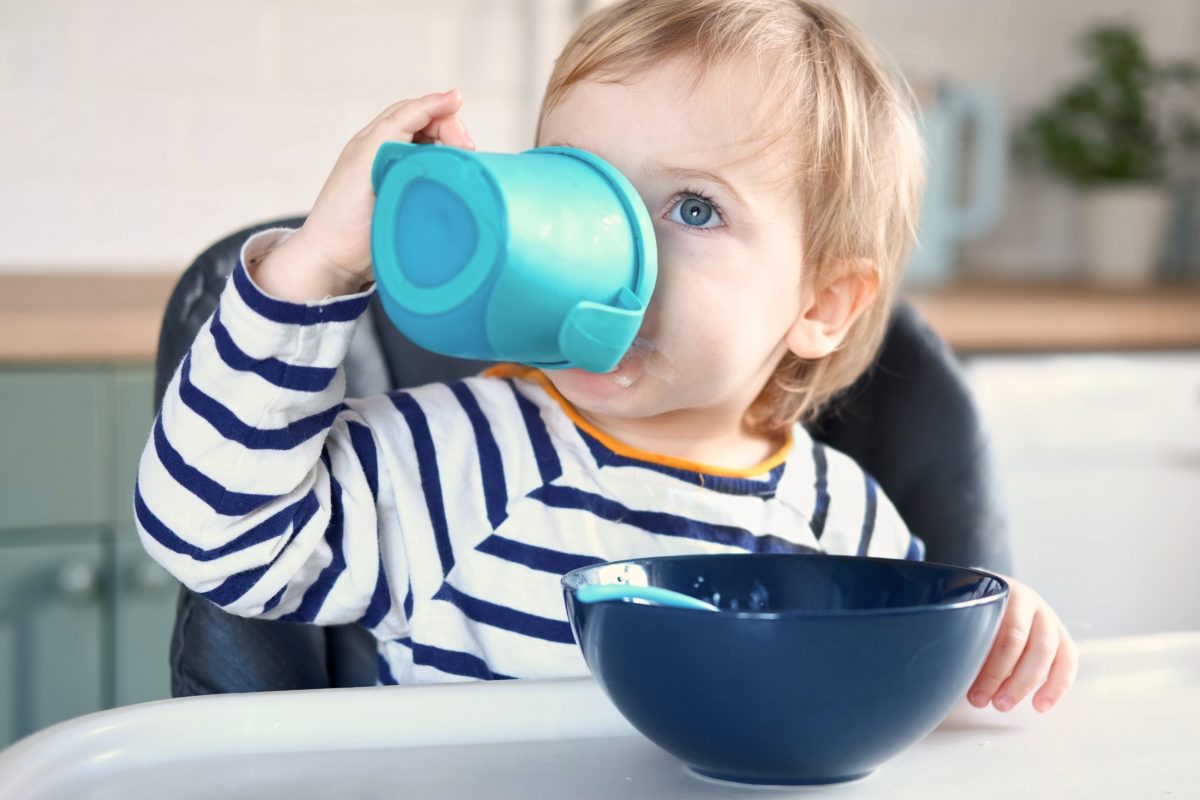
The Downfalls of Prolonged Bottle Feeding
While most children start using a sippy cup at six months old, they’ll continue to breastfeed or bottle feed for another 12 to 18 months before the sippy cup (or ‘big kid’ cup) becomes their preferred option.
At that point, it’s in the child’s best interest to wean away from the baby bottle completely.
Prolonged bottle feeding, defined as continuing to use a bottle beyond the age of 12-18 months, can have several potential negative consequences for a child’s health, growth, development, and overall well-being.
From tooth decay to a reduced appetite and poor nutrition – here are some of those consequences.
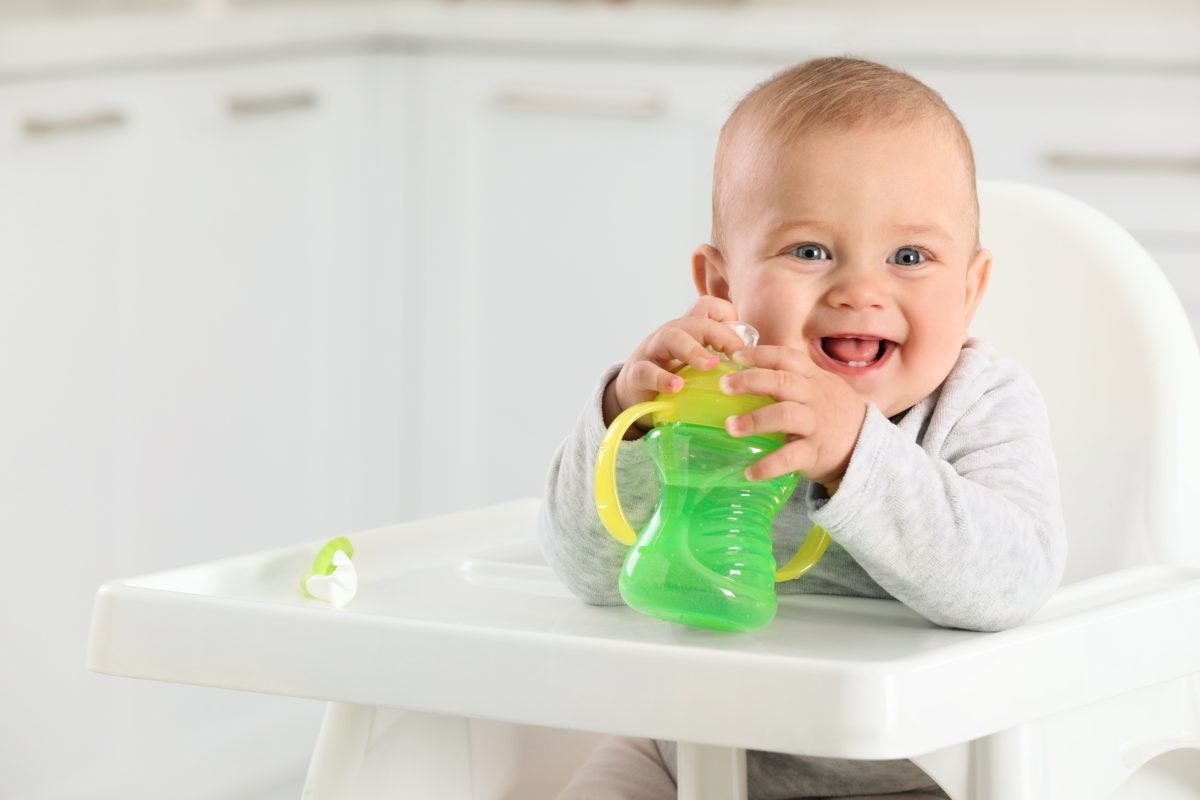
5. Reduced Appetite
Drinking from a bottle during the day can result in children not feeling hungry during regular mealtimes – making it far more likely that they skip a meal or fail to eat an adequate amount at a reasonable time.
This, of course, can throw off their entire eating schedule.
When they consume large amounts of milk from a bottle, they’re filling up on unnecessary calories that either don’t get burned or make them feel full – delaying hunger signals and reducing the desire to eat.
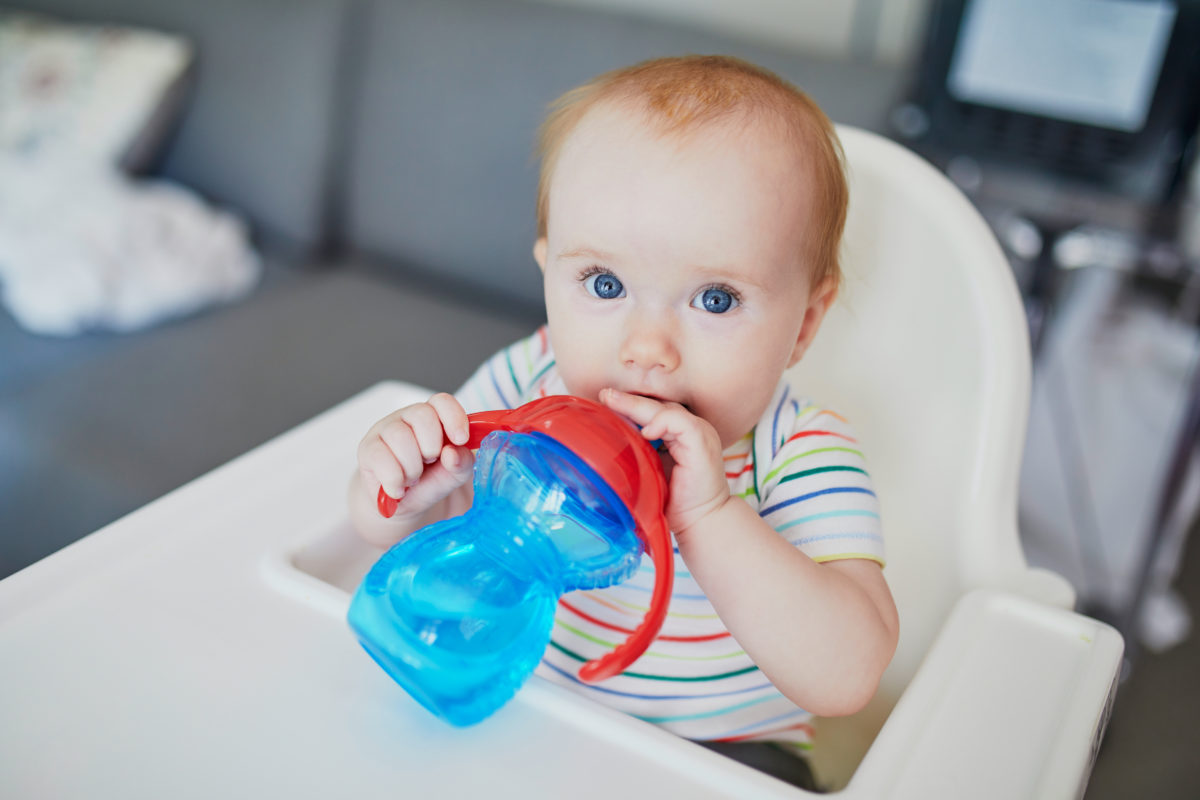
4. Poor Nutritional Intake
Relying too heavily on milk can lead to an imbalance in nutrients and food variety – which means your child won’t be getting the necessary nutrients they need to continue their daily growth and development.
Unfortunately, this often results in iron deficiency anemia.
Not only that, but excessive milk consumption and prolonged bottle feeding interferes with the absorption of iron from other foods – and iron deficiency anemia is often linked to fatigue and a decreased appetite.
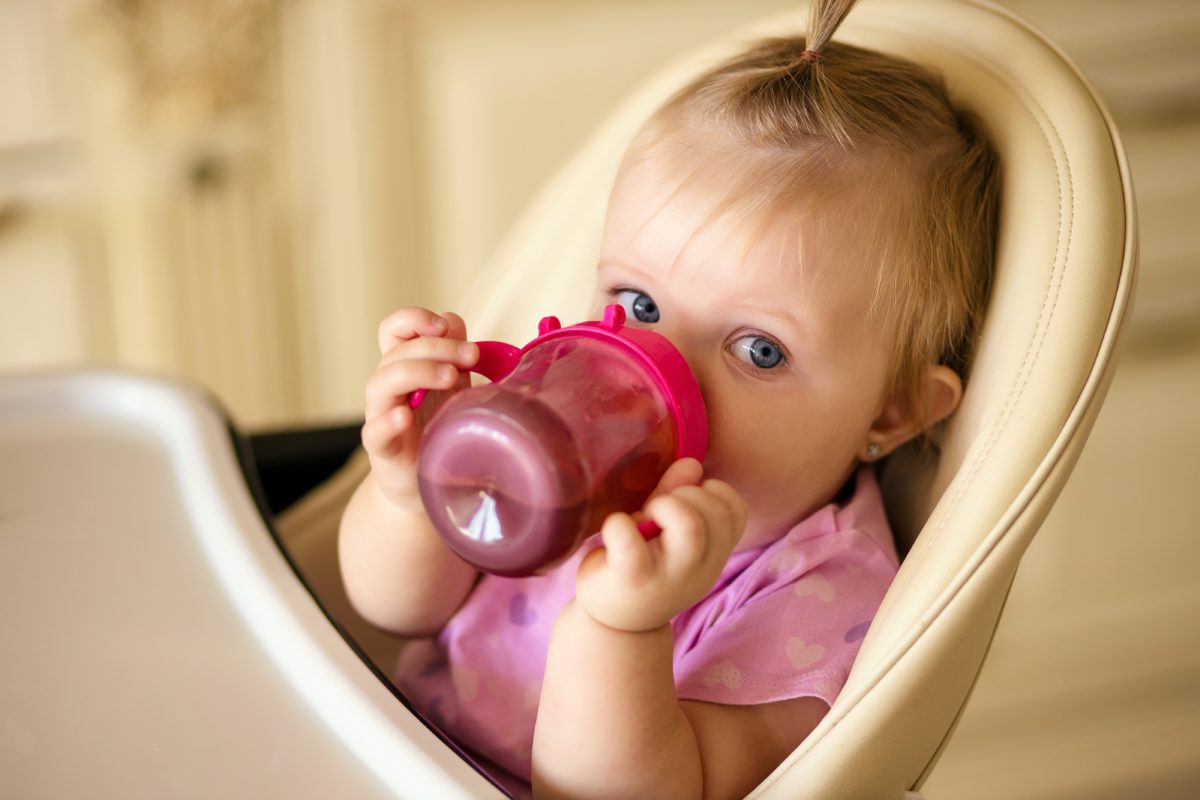
3. Oral Health
When children drink milk, juice, or other sugary beverages from a bottle, the sugars can pool around their teeth and gums – creating an ideal environment for bacteria to produce acids that erode tooth enamel.
Unfortunately, this often leads to tooth decay and cavities.
Excessive bottle feeding can also affect the alignment of a child’s teeth and jaw, potentially leading to malocclusion (misaligned teeth) – and make it more difficult when chewing, swallowing, and speaking.
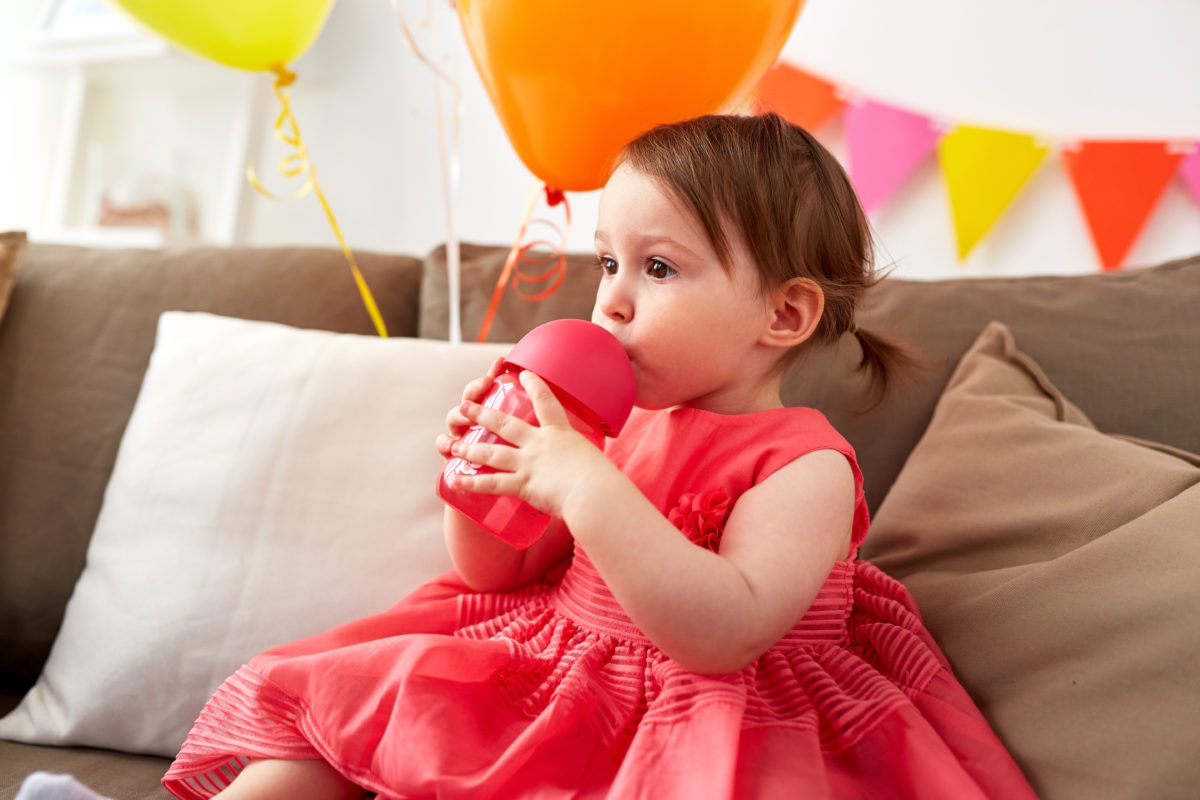
2. Poor Sleeping Habits
If a child becomes accustomed to falling asleep with a bottle, they may develop an association between feeding and sleeping – which can make it difficult for them to fall asleep or return to sleep without a bottle.
Night wakings will become much more frequent – and for a variety of reasons.
For example, excessive bottle feeding can increase the need for nighttime diaper changes and lead to digestive discomfort, gas, or bloating while sleeping. Dental pain (tooth decay) can also disrupt sleep.
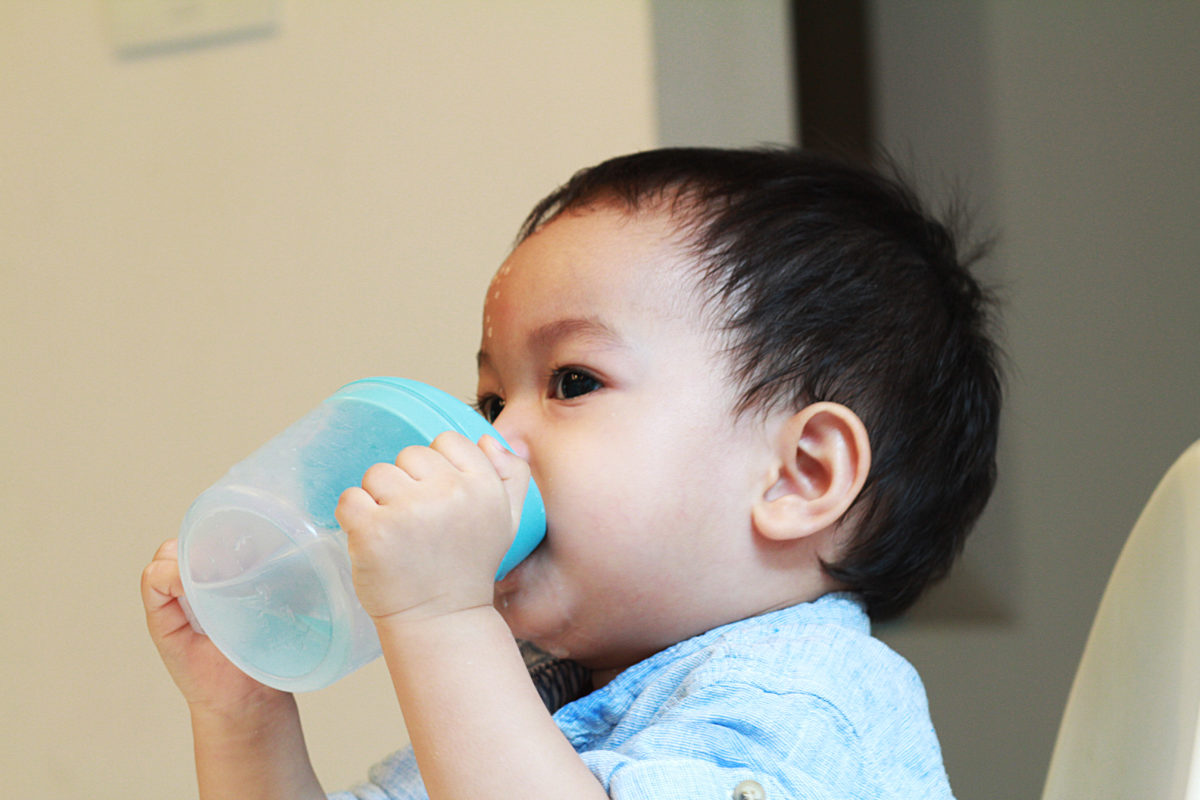
1. Increased Resistance
Like anything in life, prolonged bottle feeding can become a habit. The more your child drinks out of the bottle, the more comfortable they get drinking out of a bottle – and the harder it is to wean them from it.
The truth is most children grow attached to their sippy cup – kind of like a blankey.
If your child isn’t ready to give up their baby bottle (even if it’s being replaced by a sippy cup or regular cup), then they’ll let you know – often in the form of crying, screaming, or throwing an obnoxious tantrum.
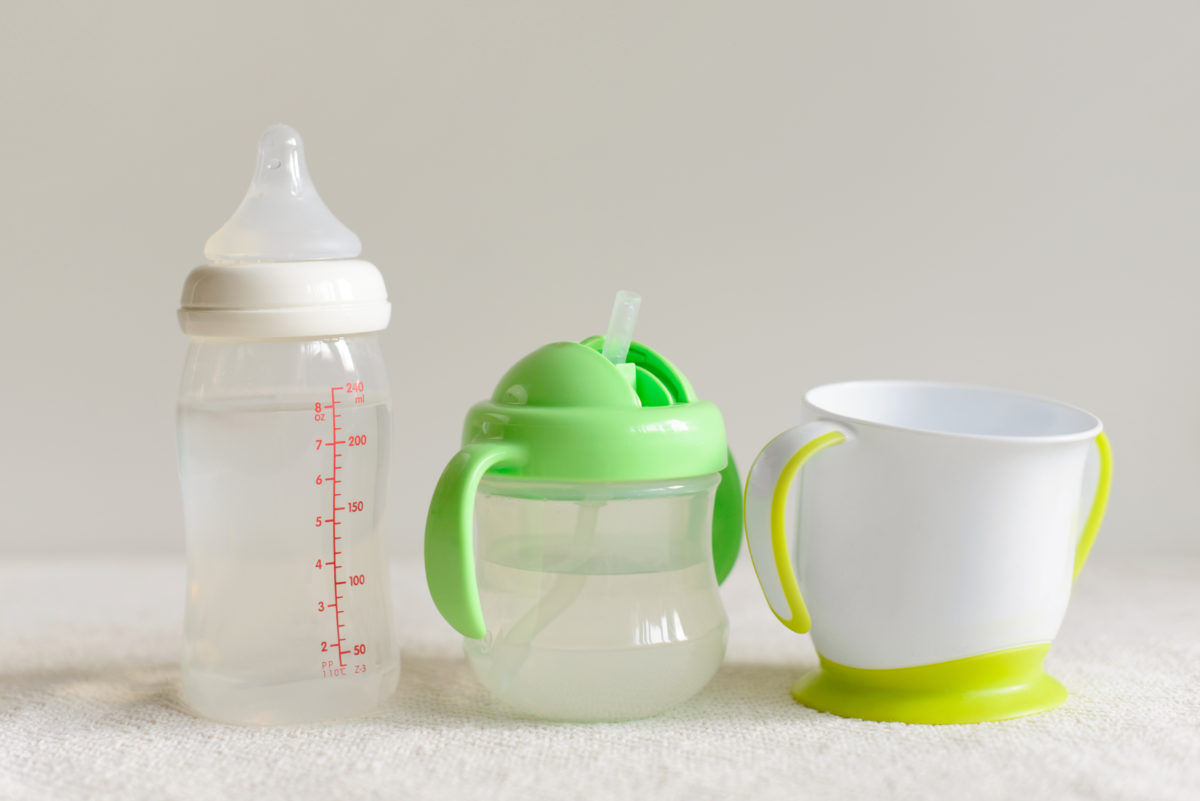
Choosing the Right Sippy Cup for Your Child
So, your baby just turned six months old and you’ve already started introducing solid foods to their diet (albeit little by little) – meaning they’re ready to give that sippy cup an honest try. But what’s next?
The next step is finding the sippy cup your child prefers.
While most people expect all sippy cups to be the same, that couldn’t be further from the truth – in fact, not all sippy cups are created equal, and what works best for one child might not work at all for the next.
That’s okay – nothing a little trial-and-error can’t fix.
Many doctors and parenting experts recommend introducing your child to a wide range of different sippy cups to ensure they’re happy with the one they get – plus, there’s nothing wrong with a little variety in life.
With that said, here are five of the most common types of sippy cups:
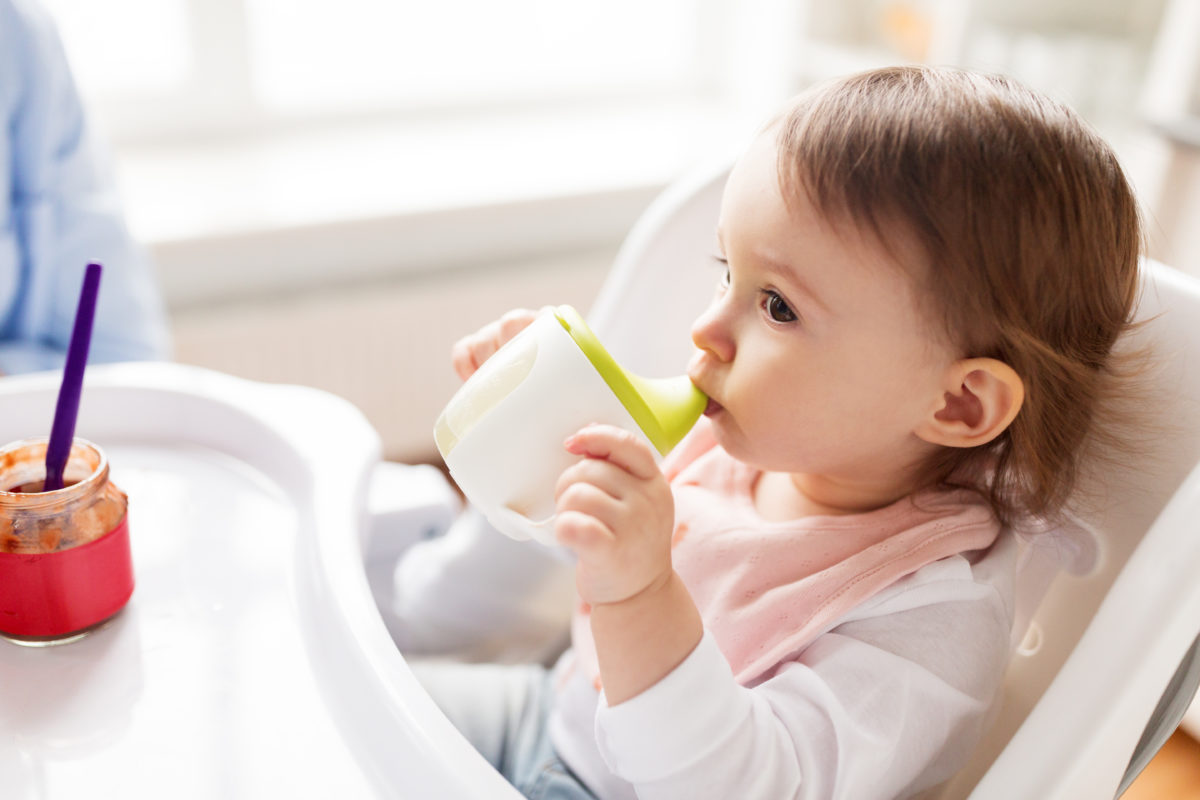
5. Learner Cups
A learner cup, also known as a training cup, almost always features a soft spout or a soft straw – which can be gentler on a baby’s gums and more familiar to those transitioning from a bottle or breastfeeding.
They also feature a spill-proof design to reduce any potential messes.
Handles on either side of the cup make it easier for little hands to hold and control the cup. As they get more comfortable holding the cup on their own, they’ll start to gain independence and motor skills.
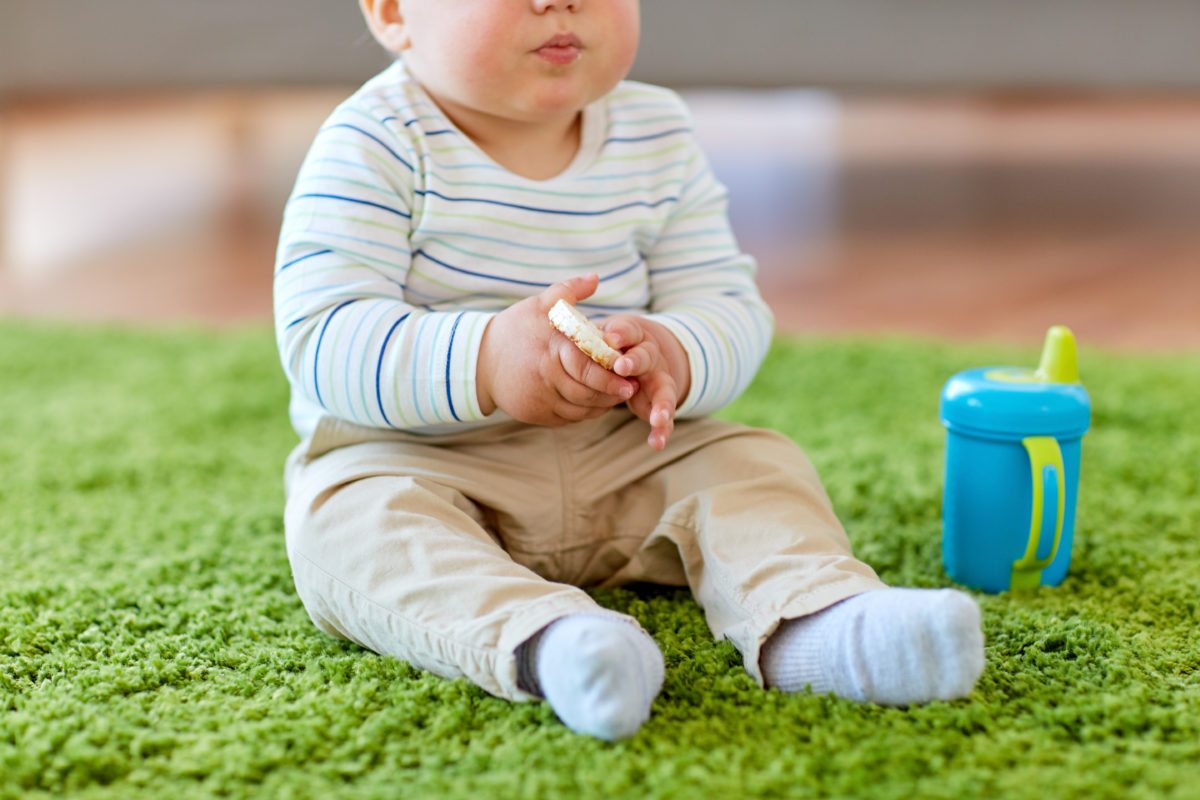
4. Hard Spout Cups
Hard spout sippy cups are a type of training cup with spouts made from hard plastic or other durable materials – making it resistant to biting and chewing, while still controlling the flow of liquid into the mouth.
For that reason, hard spout sippy cups are a great choice for teething babies.
Not only that, but many hard spout sippy cups come with valves that prevent liquid from spilling, even if the cup is turned upside down or shaken. This allows for independence, but without the inevitable mess.
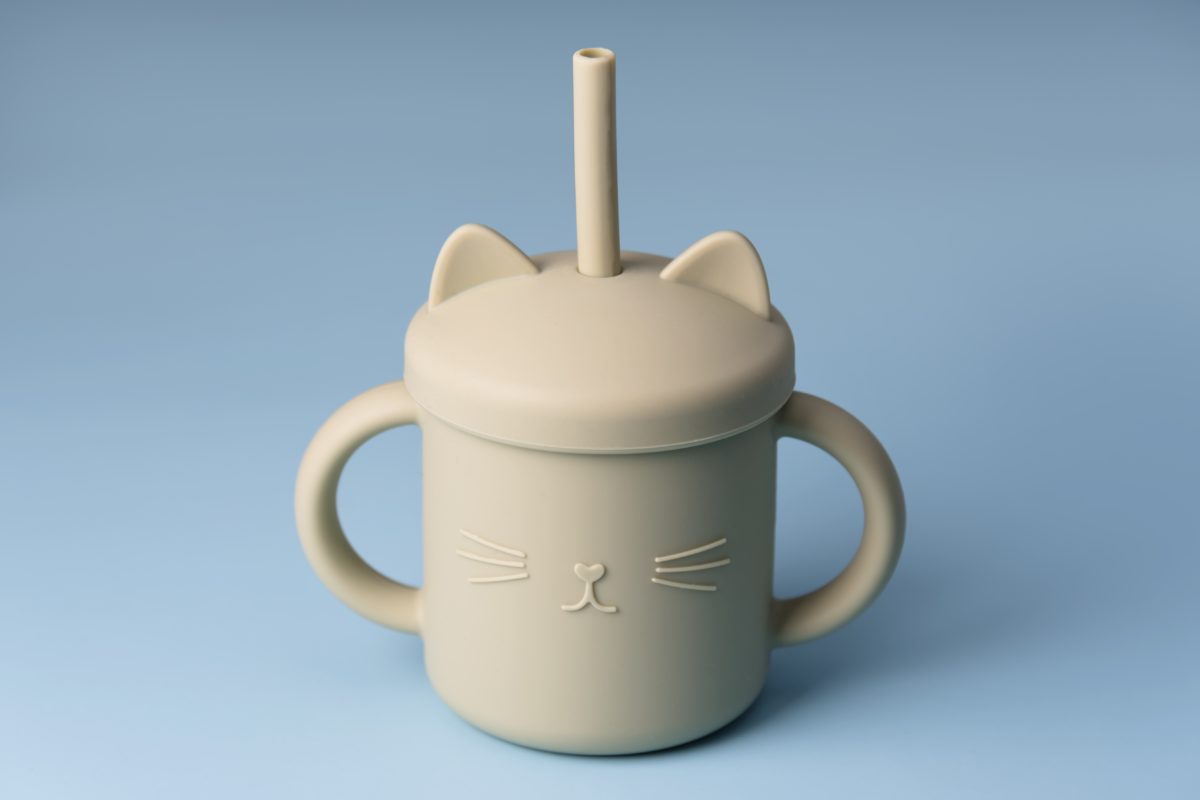
3. Straw Sippy Cups
Some sippy cups feature a straw that can be made of either a flexible silicone or hard plastic. Either way, straws require a new set of fine motor skills that your child will have to experience in order to learn.
With that said, most babies are ready for a straw by the age of 1.
Drinking from a straw also helps your child develop and strengthen the oral muscles needed for speech, eating, etc. – and encourages a more natural drinking position, similar to drinking from a regular cup.
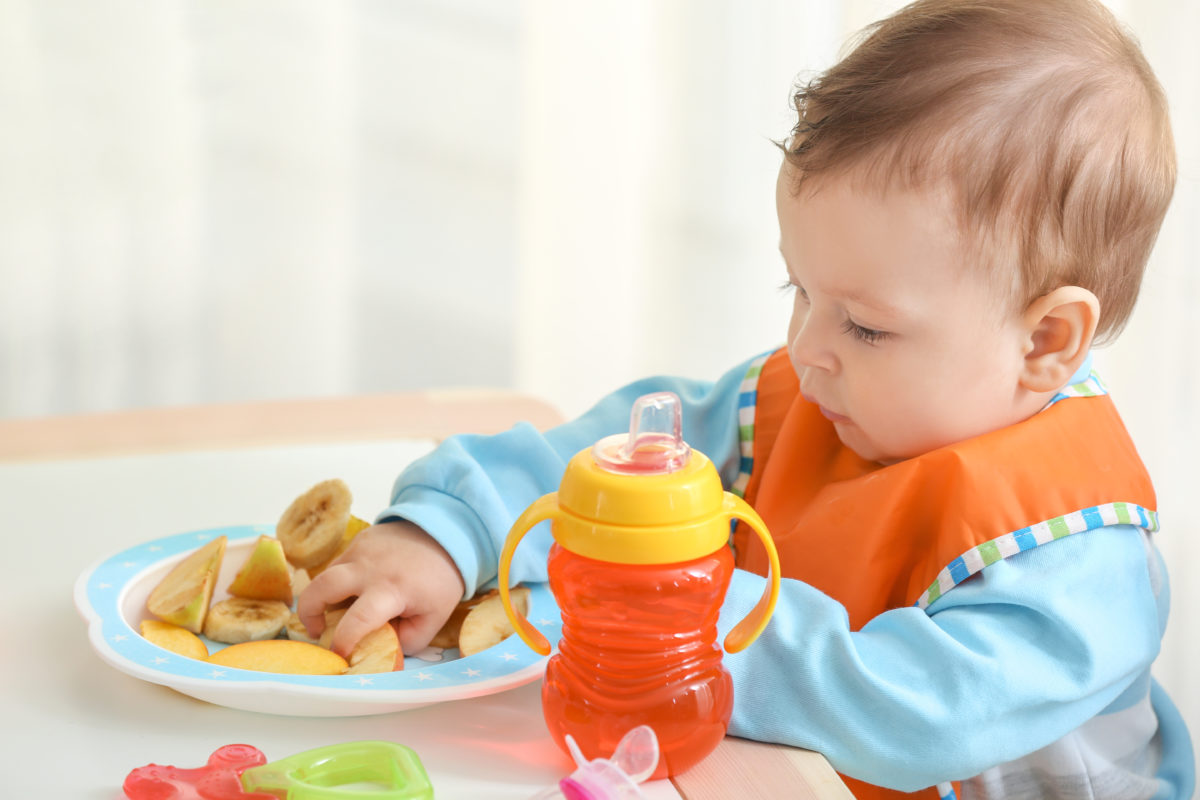
2. 360 Sippy Cups
360 cups, also known as 360-degree cups or spoutless sippy cups, allow children to drink from any edge of the cup, mimicking the experience of drinking from an open cup but without the unnecessary spills.
The design eliminates the need for a spout or straw.
360 sippy cups are perhaps the best way to teach your child how to use a regular cup – but not all children will understand how it works right away. If they’re struggling with it, try another type or design.
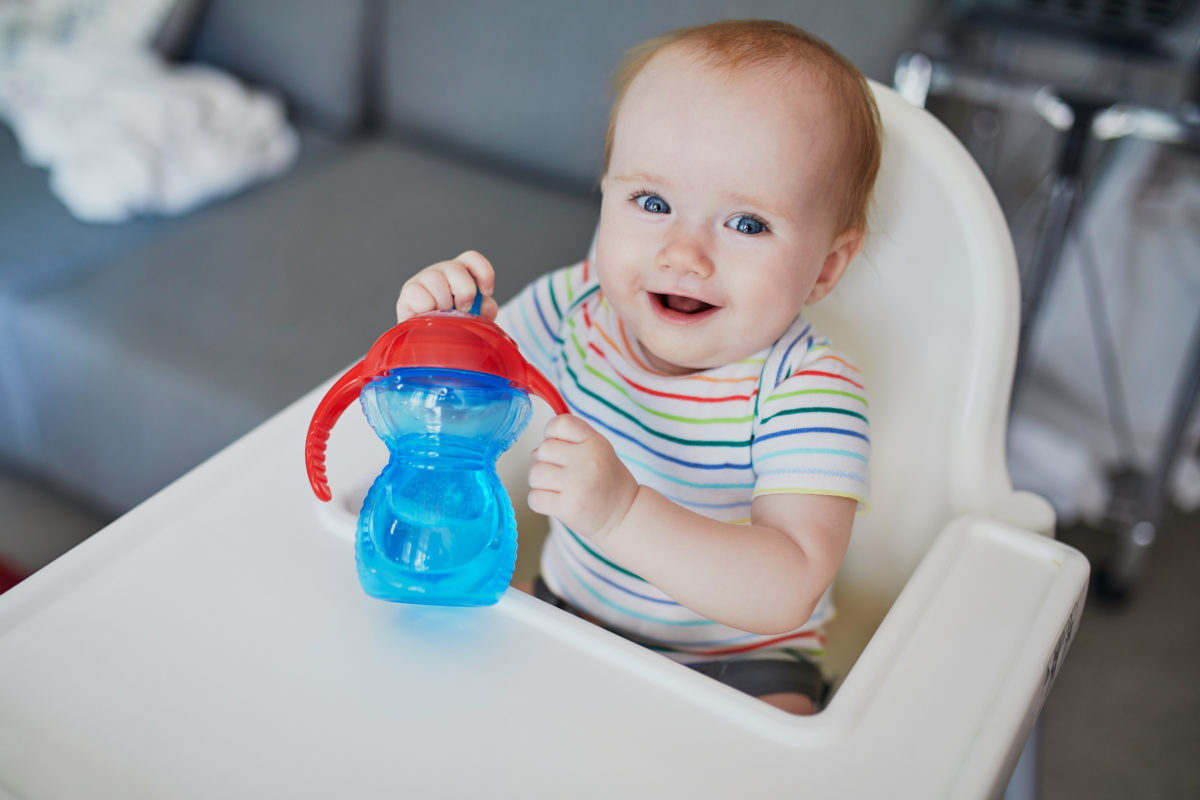
1. Spill-Proof Sippy Cups
Spill-proof cups allow children to practice drinking independently without the risk of making a big mess or spilling liquid all over them – which increases self-confidence and helps develop self-feeding skills.
A strong majority of sippy cups have some form of a spill-proof design.
Of course, it not only benefits the child, but also the parents. With fewer spills, there is less need for frequent cleaning of floors, furniture, and clothing – saving parents valuable time, energy, and effort.
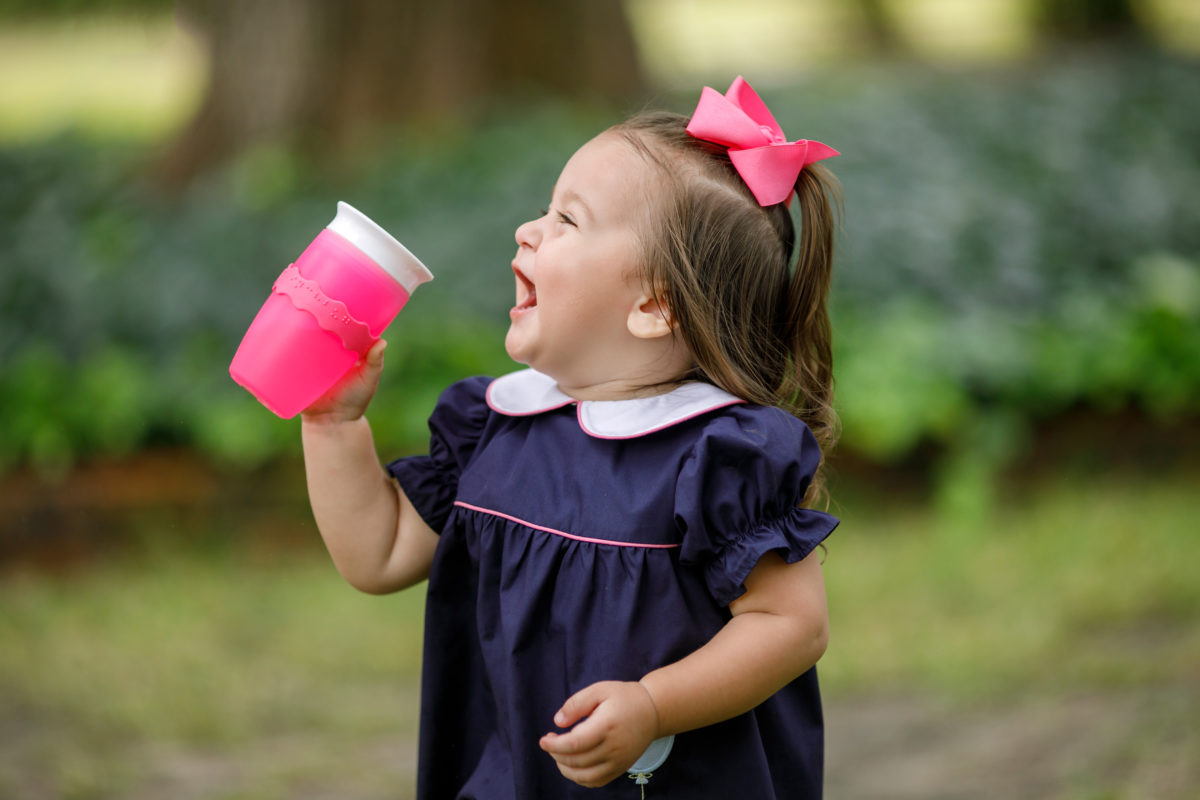
5 Tips When Transitioning From Bottle to Sippy Cup
If you take one scroll through our Answers by Mamas Uncut online forum, you’ll find that there are a lot of mothers out there looking for advice on how to teach a kid to use a sippy – don’t worry, you’re not alone!
“How on earth do I teach my daughter to use a sippy cup,” asked one mother in the forum.
Some of the mothers who responded said they preferred straw sippy cups with a weighted bottom, but others said they didn’t even bother with a sippy cup and transitioned directly to an open ‘big kid’ cup.
“I didn’t bother. We went straight to a regular cup at 6 months. At first they needed help but could manage it no problem by about 9-12 months. You just put a little bit of water in the bottom,” one mother wrote.
“Go with the straws! They already have the sucking down it’s just slightly different positioning of the mouth/lips vs a full on sippy or regular cup. Plus the straw gets the liquids pass the gums and teeth making them that much healthier as not as much touches them!” another mother responded.
For those who are having a hard time getting their child to drink from a sippy cup, here are some of our community’s most helpful tips – straight from the source, and spoken from personal experience.
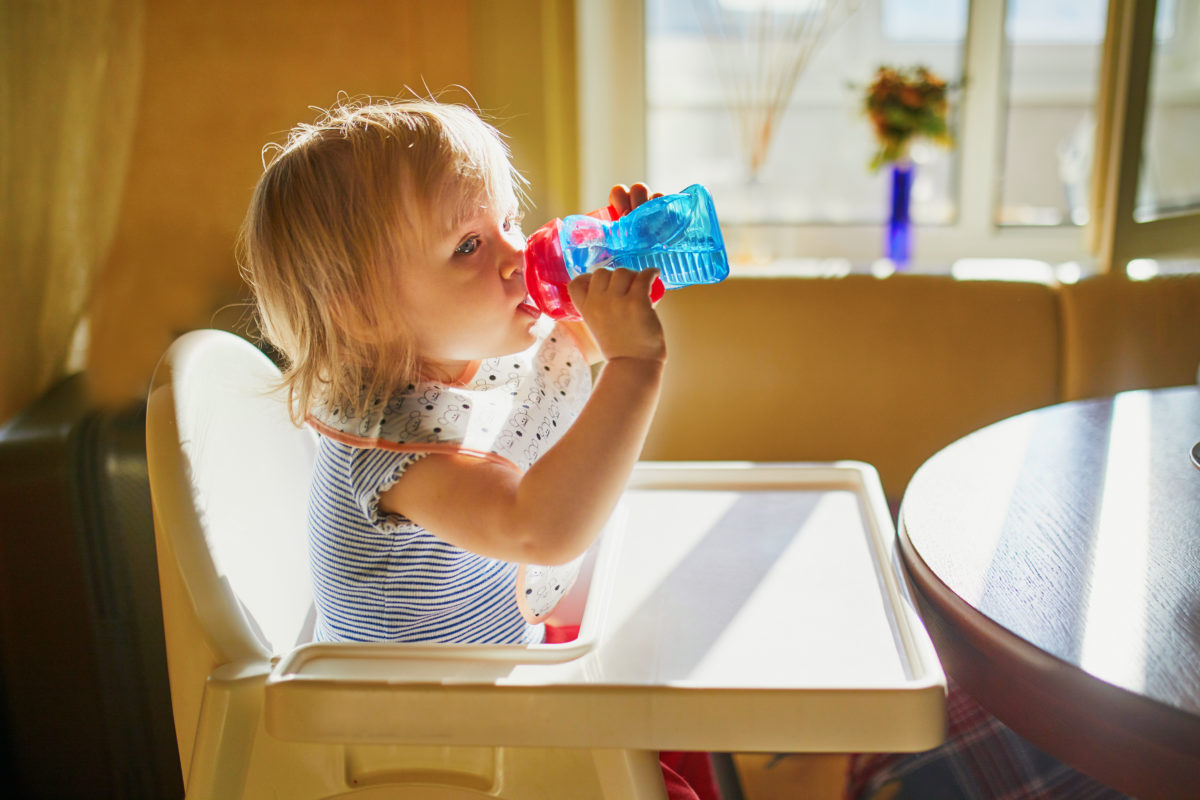
5. What to Fill the Sippy Cup With
Water is the best option for keeping your child hydrated without any added sugars or calories – and is, therefore, the best option when filling a sippy cup. It’s readily available and, in some cases, free!
With that said, try your best to avoid filling a sippy cup with juice.
In the event you choose to offer juice, make sure you dilute it with water to reduce the sugar content and always stick to 100% fruit juice. Experts say to limit juice intake to no more than 4-6 ounces a day.
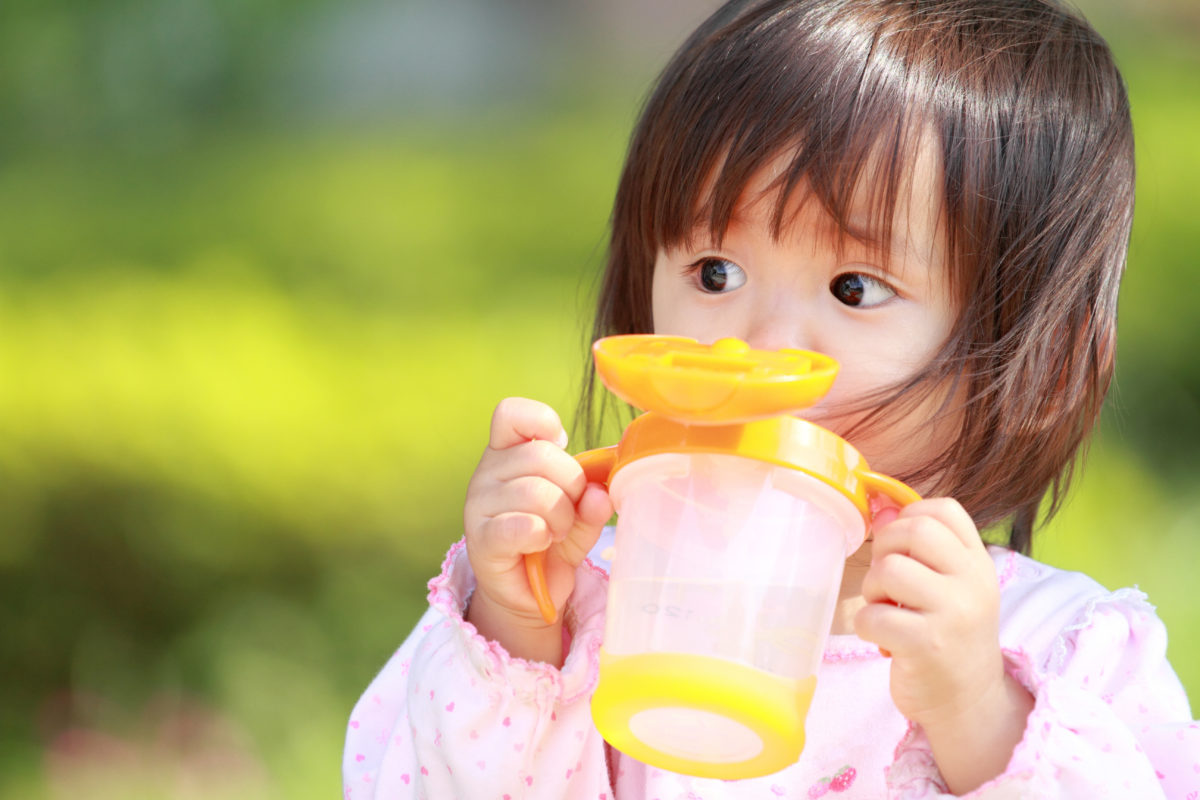
4. Monkey See, Monkey Do
As parents, sometimes it’s easy to forget that your child is essentially learning all of these things for the first time. As much as we want our children to catch onto things right away, that’s not very realistic.
But like they say – monkey see, monkey do.
If your child is starting a sippy cup for the first time, try showing them how to raise the cup to their mouth and tip it up for them to drink. And if it really helps, take a sip out of the sippy cup yourself to show them.
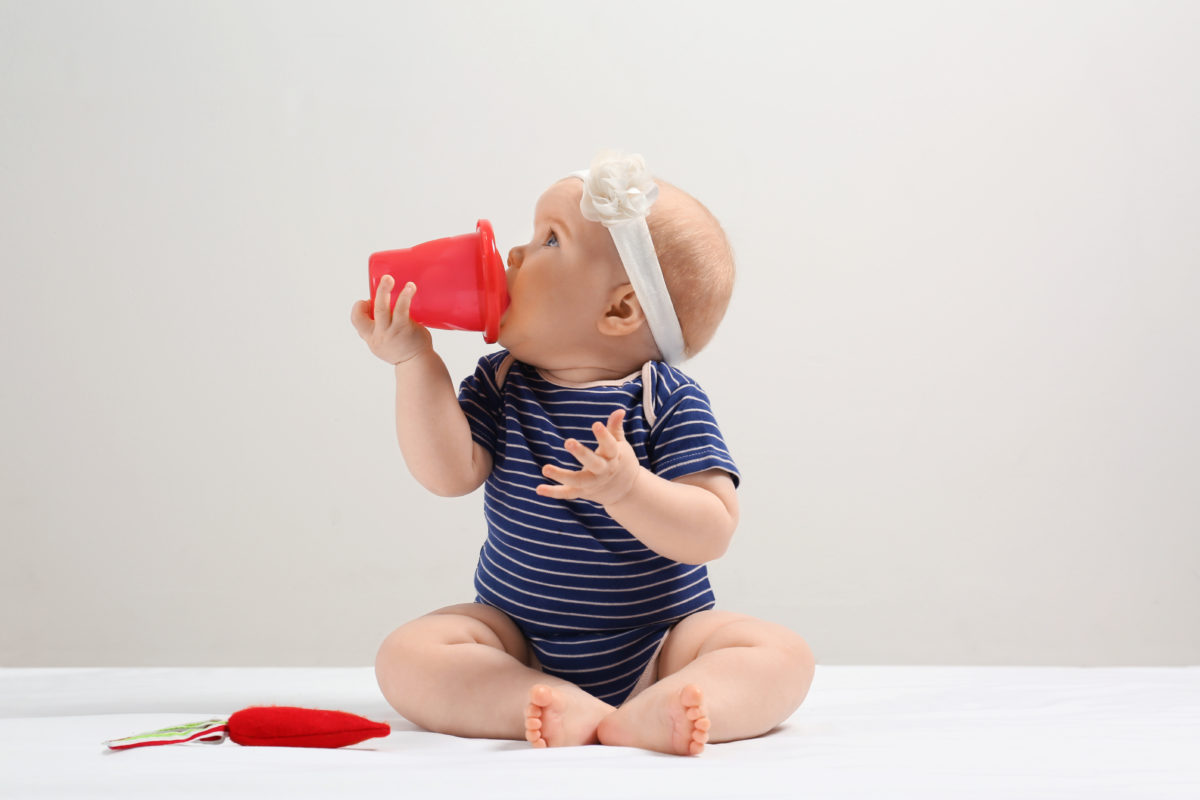
3. What to Do When Your Child Refuses
When teaching your child how to use a sippy cup, it’s important to understand that it won’t always go the way you want it to go and there will be instances where your child refuses – especially in the early stages.
Here are some things you can try when that happens:
- Keep trying different sippy cups until you find one they like
- Always introduce the sippy cup gradually, and don’t force anything
- Offer both the bottle and the sippy cup initially, allowing your child to choose
- Make the transition playful by turning it into a game, tea party, or picnic with the sippy cup
- Establish a consistent routine for using the sippy cup and offer it at the same times each day
At the end of the day, if your child still refuses to use a sippy cup, then table the idea for a few days and revisit it at a later time. Sometimes, they’re just not ready to take that next step – and that’s totally okay!
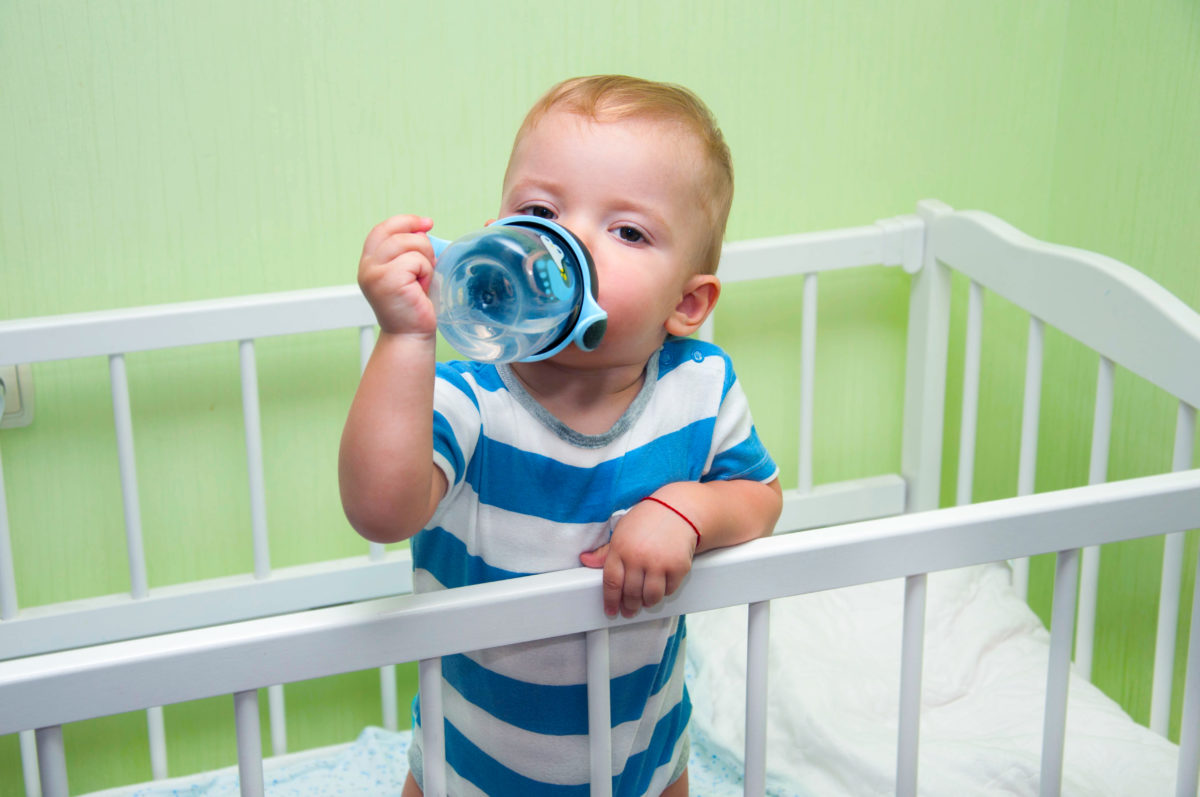
2. Encouragement & Reward
Celebrate every attempt your child makes to use the sippy cup. Clap, cheer, and offer verbal praise like, “Great job using your big kid cup!” It might not mean much to you, but it could mean the world to them.
Whatever you do, make sure you’re making it fun and exciting for your child.
For example, create a reward chart and let your child add a sticker each time they successfully use the sippy cup. After they’ve collected a certain number of stickers, reward them with a small treat or activity.
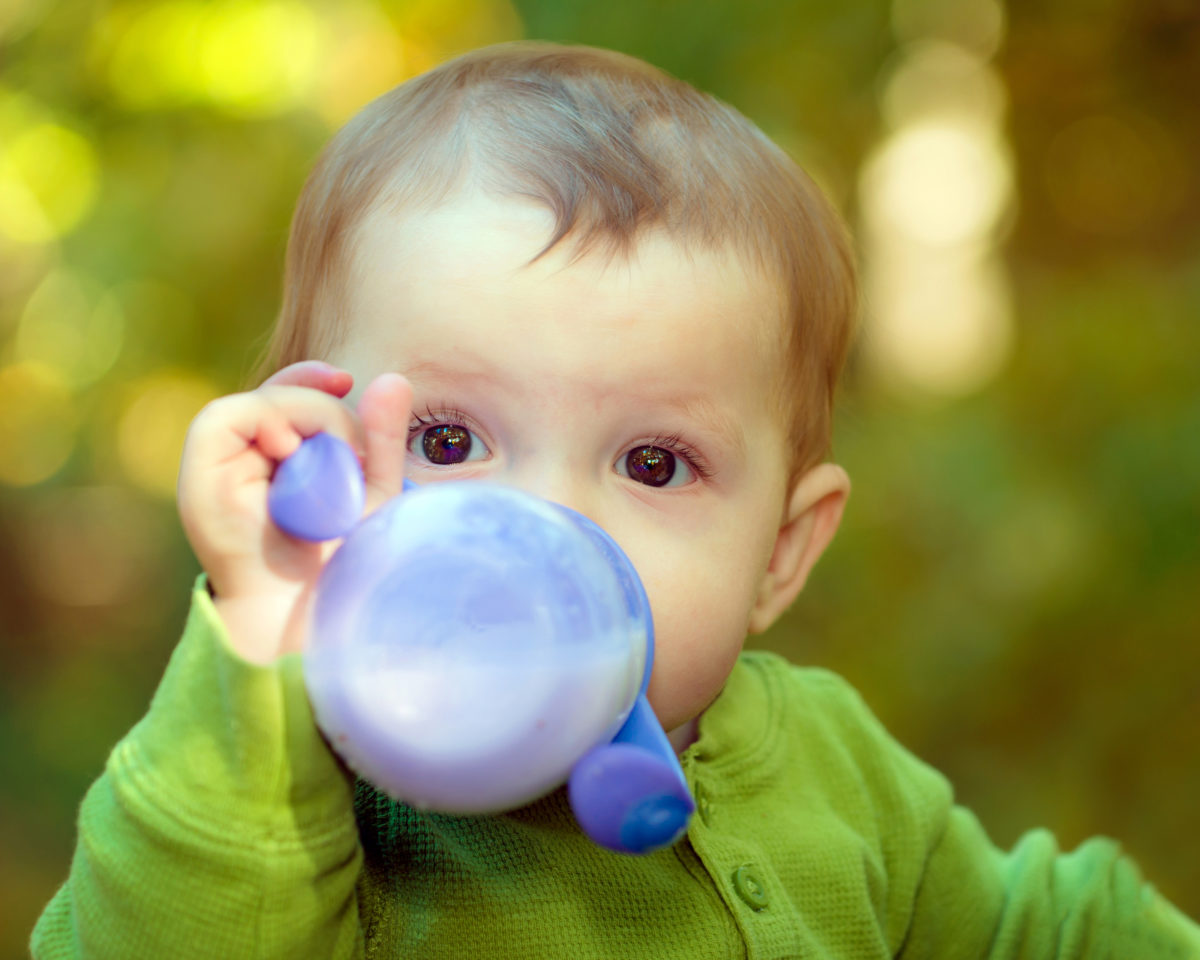
1. Remember – Good Things Take Time to Develop
One of the biggest things you need to remember when teaching your child how to use a sippy cup – or, teaching them how to do anything, really – is that these things take time to develop. It’s not automatic.
So, don’t expect your child to pick up on it right away.
Instead, stay patient and recognize that every child develops at their own pace. If your child is struggling, try breaking the process down into small, manageable steps, and understand that setbacks are normal.
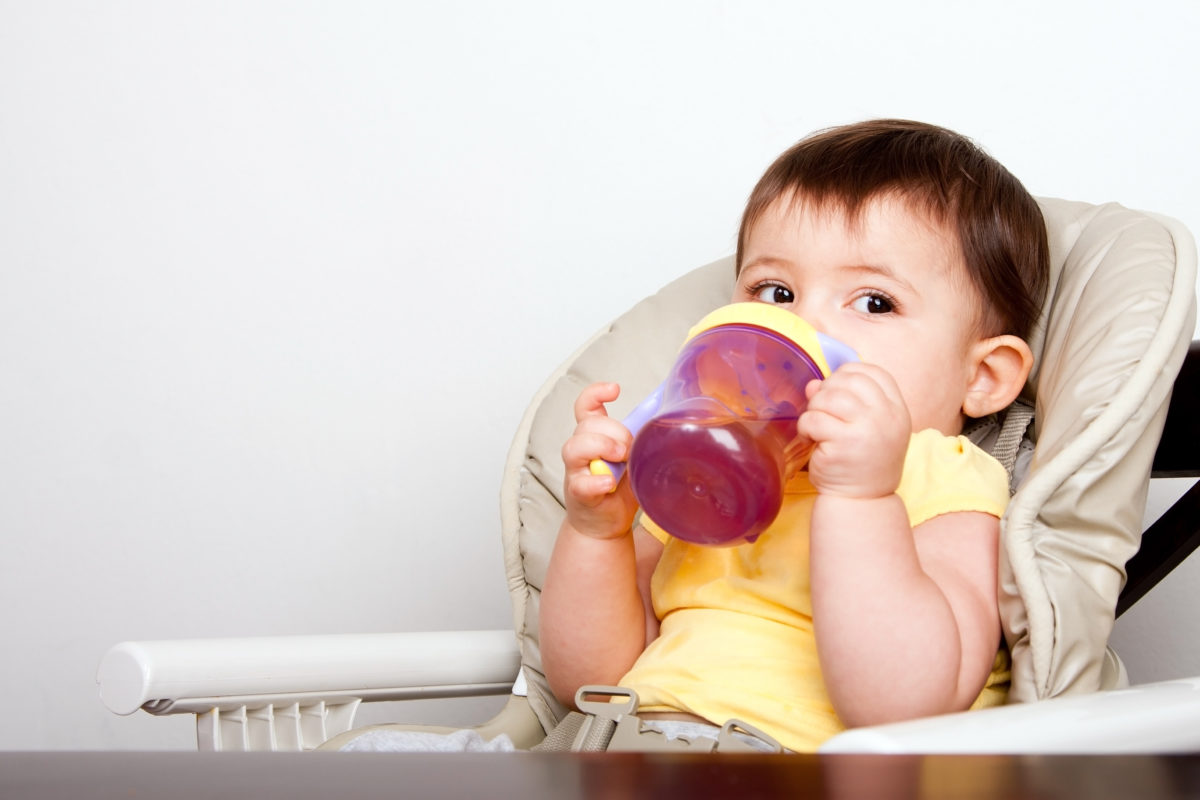
What Comes After the Sippy Cup?
The sippy cup is a valuable tool for parents who are in the process of weaning their child off the baby bottle and can be the perfect stepping stone to using a regular cup – one with no lid, straw, or spout.
But at a certain point, the sippy cup will be an afterthought to your child.
So, when should parents start weaning their child off the sippy cup?
Well, most doctors and experts recommend phasing out sippy cups between 18 and 24 months of age. By this age, your child has developed the motor skills and coordination needed to use a regular cup.
Much like you did when introducing the sippy cup, phase it out gradually over time.
Every child is different, so be flexible with the timeline and methods you use to make the transition, and adjust your approach as needed based on their development. You and your child will get there together.
YOU MAY ALSO LIKE: 10 Excellent Products for Parents On the Go Who Could Use a Little Hand
Are you or your child having a hard time getting through the sippy cup stage? If so, don’t worry – Mamas Uncut has your back. Feel free to leverage our online community of mama experts by asking them a question in our Answers by Mamas Uncut online forum. You’ll have plenty of expert advice in no time!
Mamas Uncut is THE online place for moms. We cover the latest about motherhood, parenting, and entertainment as well – all with a mom-focused twist. So if you're looking for parenting advice from real parents, we have plenty of it, all for moms from moms, and also experts. Because, at the end of the day, our mission is focused solely on empowering moms and moms-to-be with the knowledge and answers they’re looking for in one safe space.
